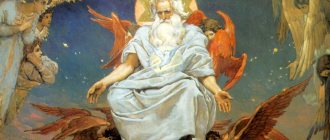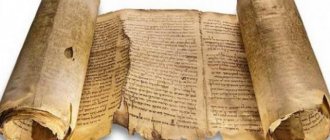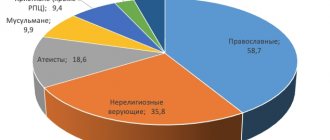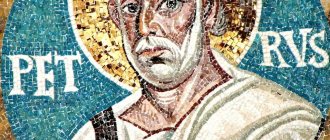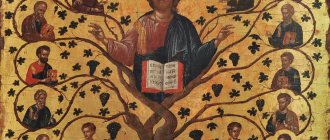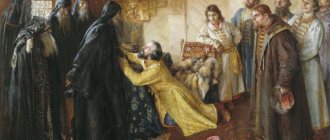This was the name of the early Christian churches located in Asia. The name of each is associated with a city, but all cities are associated not with geographical features, but with a Roman province. All of them are described in the revelation of John the Theologian. Their names are associated with the 7 periods of Christianity, the church and its history.
Photo: Ru.wikipedia.org
Archbishop Averky Taushev describes in his revelation that the seven golden lamps describe the 7 phases of the temple in earthly life. These cities include churches:
- Thyatira;
- Laocidia.
- Elsa;
- Pergamon;
- Philadelphia;
- Smyrna;
- Sardinians;
In the Apocalypse, the 7 churches of the Apocalypse (or Asian churches) are indicated by 7 golden lamps. Here's what we know about them today.
Hilt
Photo: Flickr.com
A city in Asia Minor, which today is located in Turkey. Its modern name is Selcuk. According to some sources, the first preacher of Christianity there was the Apostle Paul. In this city he managed to find disciples of John the Baptist. The city was pagan, but several Jews lived along with the Christians. They had their own synagogue. It was here that the Apostle Paul began his Christian sermons. And although not all Jews followed Paul, Christianity came to Ephesus. Jews and Christians were united by opposition to the pagan cult of Artemis, revered by local residents. She was considered the goddess of fertility and was worshiped by those who did not believe in Christianity.
The church described at Ephesus is apostolic. At this time, the apostles preach Christianity throughout the world, organize prayers and services and begin to fight heresies. At that time, the influence of Christianity was not yet consolidated: people were just beginning to learn who Christ was, receiving knowledge from the apostles themselves and from their followers.
see also
- Christianity portal
- Biblical numerology
- Book of Revelation: chapter 1, 2, and 3
- Christianity in Anatolia during the Roman Empire
- Classic planet
- Early centers of Christianity
- Eastern Christianity
- Events of Revelation (Chapter 1)
- List of Mesopotamian deities#Seven Planetary Deities
- Seven Factors of Awakening
- Seven pilgrimage churches of Rome
- Seven Spirits of God
- Summary of Christian eschatological differences
Smyrna
Photo: Ru.wikipedia.org
Today in its place is modern Izmir (Türkiye). This is one of the most beautiful and largest cities outside of Istanbul. Izmir has always been considered a beautiful city. It included residents of the island of Lesvos, known for their behavior and attitude towards men. Most of the city's residents were engaged in crafts and trade. Once Smyrna was destroyed by an earthquake, for which it received the name “city of suffering.” But after some time it again became the most prosperous city in Asia Minor. This city housed a huge number of different pagan temples and altars to emperors. In this city lived Jews who, unlike the inhabitants of Ephesus, had a negative attitude towards Christians. This even led to the rebellion and death of the Bishop of Smyrna Polycarp. Christians were executed in the circus arena, and the persecution was organized not by the authorities, but by a cruel crowd that craved only bread and bloody spectacles.
The Church of Smyrna reflects the period of persecution of Christians and opposition to pagans. During this time, many suffered for their faith in order to receive heavenly life. The Church survived despite all the persecution and persecution, both from the authorities and from the pagans.
further reading
- Halley, H., Halley's Handbook of the Bible
(Grand Rapids, MI: Zondervan, 1978), p. 684 - Scofield, K. I., The Scofield Reference Bible
(Oxford: Oxford University Press, 1967), p. 1332. - Ramsay, W. M. (1904). Letters to the Seven Churches of Asia
. Hodder and Stoughton. Archived from the original on 2018-04-19. Retrieved 2012-01-05. - Hemer, Colin J. Epistles to the Seven Churches of Asia in Their Local Environment
(JSOT Press, 1989), p.283. - Clarence Larkin - The Illustrated Book of Revelation. A Study of the Last Prophetic Book of Scripture (1919), page 248
Pergamon
Photo: Ru.wikipedia.org
The city is located in western Turkey. It was not a place of trade and metropolitan life, like Ephesus and Smyrna. It was once the capital of Asia Minor. Despite the fact that trade did not flourish there, as in other cities, Pergamum was considered one of the largest cities in Asia Minor.
This area was considered amazingly beautiful and picturesque. Not only nature blossomed, but also houses, beautiful palaces. The central part of the city was the acropolis, which dominated the equally beautiful lower surroundings. Athena was considered the guardian of the city, whose temple was located near the local library. Zeus was also revered by the pagans. The word "parchment" is associated with Pergamum. There they invented paper on which it was convenient to write and store manuscripts. The Pergamon Library contained approximately 200,000 scrolls. The city's Jewish community was not only large and powerful, but also wealthy. However, it was not she who opposed the Christians, but numerous pagan cults. Indeed, the city had many temples to Athena, Zeus, Hera and many others. In this city, Christianity was preached by Antipas, who was killed in the temple of Artemis. Antipas preached the faith so zealously that many followed him.
The Church of Pergamon is considered to be from the period of the Great Councils. Here Christian teaching is free from heresies and false interpretations. The statutes and decrees of the Church acquire certainty and formalization. The time for advice begins.
Thyatira
Photo: Ru.wikipedia.org
A city located in Asia Minor, closest to the coast of the Aegean Sea. The border of the region separating the kingdoms of Lydia and Pergamon.
Known for its textiles, bright fabrics, materials, indigo dye. The most expensive fabrics - lilac-purple - were intended for kings and nobility. Paganism flourished in the city. Idols such as Apollo, Bacchus, and Artemis were especially revered. Thiatra was not a city where the cult of the emperor was cultivated, but there were many pagan beliefs that Christians had to fight against. Jews in the city are not mentioned, nor are their conflicts with Christians.
The Church of Thyatira is considered the dawn of Christianity, when violent conflicts were overcome. Christianity is gradually conquering Europe; faith and deeds come first. The Church no longer needs to actively defend its place in the sun.
Sardis
Photo: Ru.wikipedia.org
One of the largest cities of the ancient world. Here is a majestic, beautiful acropolis and the remains of the Temple of Artemis. This city was called the largest watchtower that guarded the lands of Herman. However, over time, the plains could not support the massive city and collapsed.
There were many pagan temples and altars in this city. The Jewish community of this city was considered the largest in all of Asia Minor. The emperor of the city allowed the Jews to build temples and collect tithes. In addition, the largest synagogue was sponsored by the emperor himself. At the same time, Jews did not oppose Christians. Many were already openly preaching and baptizing children.
The Church of Sardis is associated with materialism and humanism. It is actively developing, the main emphasis is on good deeds and living according to Christian virtues.
To the Apostle Philip
Last year, Italian archaeologists working in Turkey announced a historical sensation: the relics of the Apostle Philip were discovered in ancient Hierapolis.
One of the most popular excursions from Antalya is Pamukkale: unique limestone platforms with thermal water. Nearby is the ancient city of Hierapolis with an amphitheater, agora, and ancient temples. But the place on the hill where the Apostle Philip was crucified is not included in standard group routes.
Philip came to Hierapolis with the Apostle Bartholomew to preach and establish a community, and was crucified by the Romans on a hill above the city when he was 87 years old. Philip was nailed to the cross upside down, and Bartholomew's hands were nailed to a tree so that he could watch his friend's torment. According to legend, at that moment an earthquake occurred and smoke and flames burst out of the ground. The frightened soldiers rushed to remove Philip from the cross, but it was too late. But Bartholomew was saved. Witnesses to this miracle were baptized, and a church was built on the site of the crucifixion.
Excavations have been going on here for more than 50 years - the walls of the temple at the site of the crucifixion were raised three meters from the ground. But just last year, Italian archaeologists discovered another church, and in it - a tomb and relics. Today, the place associated with the Apostle Philip is becoming increasingly popular among pilgrims.
Philadelphia
Photo: Ru.wikipedia.org
The youngest city of the seven mentioned in the Apocalypse. The modern city of Allahsehir was built in its place, making it difficult to study. The city was famous for its winemaking, even wine was depicted on coins. It had several pagan temples. The dawn of the city dates back to the Byzantine period. The Jews of this city were hostile to Christians, but by that time Christianity had become quite strong. The Church of Philadelphia remained a pillar among the ruins. At that time, Ephres was destroyed, Sardis turned into a village, and Muslim temples stood in Pergamum and Thyatira.
The Church of Philadelphia is a modern church where you can go to temples, but there are no special people who want it. The doors are still open, but that won't always be the case.
Recommendations
- Revelation 1:11
- John (1994). Barbara Aland; Kurt Aland; Johannes Karavidopoulos; Carlo M. Martini; Bruce M. Metzger (ed.). Greek New Testament
. Deutsche Bibelgesellschaft. - Walter Bauer (1979). William F. Arndt; F. Wilbur Gingrich; Frederick W. Danker (ed.). A Greek-English Lexicon of the New Testament and Other Early Christian Literature
. University of Chicago Press. - 2:1, 8, 12, 18; 3:1, 7, 14
- 2:2-3, 9, 13, 19; 3:1, 8, 15-17
- 2:4-5, 10, 14-16, 20-25; 3:2-3, 9-11, 18-20
- 2:7, 10-11, 17, 26-28; 3:4-5, 12, 20-21.
- 2:7, 11, 17, 29; 3:6, 13, 22
- Unger's Bible Dictionary
(Chicago: Moody Press, 1975), page 924. - Scofield, W. I., The Scofield Study Bible (New York: Oxford University Press, 1996), pp. 1331
- "Chapter XXII". www.preservedwords.com
. Archived from the original on 2018-01-04. Retrieved 2017-01-06. - Halley, H.H., Halley's Handbook of the Bible
(Grand Rapids, MI: Zondervan, 1978), p. 688 - Unger, M. F., Unger's Bible Dictionary
(Chicago: Moody Press, 1975), p. 924. - Branham, W. M., An Exposition of the Seven Church Ages
(Jeffersonville, Indiana: Voice of God Records) 2005 - “WHAT IS “VOTING”? (PART 1 OF 2).”
- Hom., xiii in Luc. And Hom., Xx in Num.
- Hær., XXV.
- James L. Recegui, The Revelation of John: A Narrative Commentary
(Grand Rapids, MI: Baker Academic, 2009), 81. - Easbon T. Beckwith, The Apocalypse of John
(NY: MacMillan Company, 1919; reprinted by Wipf and Stock), 446, Beckwith's italics. - Henry Barclay Sweet, Commentary on Revelation: The Greek Text
(1906, reprint Grand Rapids: Kregel Publications, 1977), 22. - Resseguie, The Revelation of John
, 81;
John P. Sweet, Discovery
(Philadelphia: Trinity Press International, 1990), 73. - Dan. xii. 3.
- Ep., Xliii (al. Clxii), n. 22.
- Angels of the Churches ,
Catholic Encyclopedia - Merrill Unger, Unger's Bible Dictionary
, (Chicago: Moody Press, 1975) p. 52 - Scofield, W. I., The Scofield Study Bible
(New York: Oxford University Press, 1996) p. 1331
Laodicea
Photo: Ru.wikipedia.org
considered the last city of the Apocalypse. It was a famous medical center of antiquity. There were pagan temples and a fairly influential Jewish community here. For Christians in this city there were 2 prohibitions: celebrating the Sabbath and worshiping angels. The city cultivated the custom of “destruction of memory”: if a person did something shameful, his name was erased from all sources, even from monuments.
The Church of Laodicea is the period preceding the end of the life of all mankind. At this time, people will not be hot, but they will not be cold either. Many people themselves don’t know what they want. Despite the material results, many will become unhappy because they will not receive worthy spiritual food.
Sardis
And write to the Angel of the Church of Sardis: Thus says He who has the seven spirits of God and the seven stars: I know your works; you have a name like you're alive, but you're dead. Stay awake and establish other things close to death; for I do not find that your works are perfect before My God. Remember what you received and heard, and keep and repent.
If you do not watch, then I will come upon you like a thief, and you will not know at what hour I will come upon you. However, you have several people in Sardis who have not defiled their garments, and will walk with Me in white robes, for they are worthy.
He who overcomes will be clothed in white robes; And I will not blot out his name from the book of life, but I will confess his name before My Father and before His angels.
Let him who has ears hear what the Spirit says to the churches.
(Rev. 3:1-6)
The message of the Sardinian Church points to the Protestant Church, which has raised its voice against the errors of Catholicism, but since it has no worthy deeds, its influence fades: “you have a name that you are alive, but you are dead.” At the same time, the letter notes that in the Sardinian Church, as in all churches of that and our time, there were different people. This is also evident from the apostolic epistles, especially in the Corinthian church.
When someone committed a criminal act and was convicted, they were stripped of their citizenship and their name was removed from the register. Believers who managed to remain on the register could never be erased from the eternal book of life.
The city was considered a textile center, producing wool for himation, the most common outerwear for men and women in the Greco-Roman world. The color white in the book of Revelation has always signified purity and dignity. Thus, white robes were considered the most appropriate reward for the winners.
